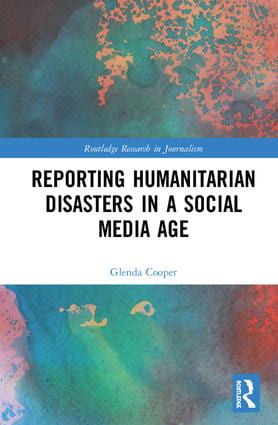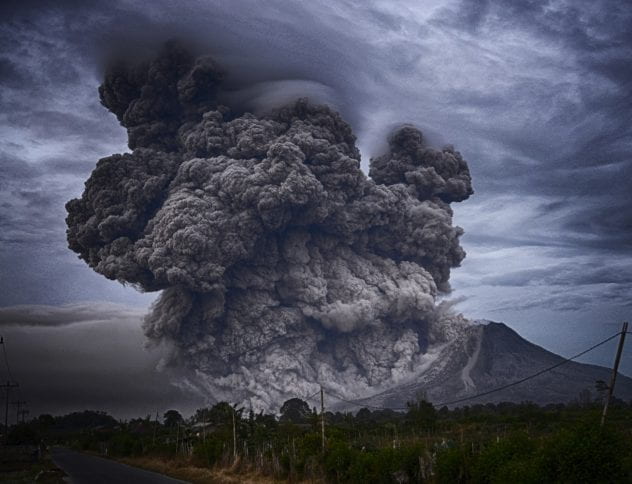After a successful academic year which saw the publication of her book, Reporting Humanitarian Disasters in a Social Media Age, and her play about the representation of refugees come to life on stages across the UK, we caught up with City University’s Dr. Glenda Cooper to hear about journalists’ relationships with user-generated content (UGC) and her plans for the year ahead.
By Carolina Are

How do journalists covering disasters feel about the rise of UGC?
I think that journalists recognise that UGC is now part of disaster reporting – and that one of the first things a newsdesk will do is scour social media feeds for tweets, photos and video. One of my interviewees wryly commented that Twitter was the first draft of history now.
When I first started to talk to journalists about UGC use in disaster reporting, they were very wary about it. As a result they would often use pejorative terms to describe it – one called it nothing more than ‘smoke and mirrors’. I think this is because it challenged the norms and boundaries of journalism. ‘Bearing witness’ has always been one of the key justifications for journalists – and journalists have found that their privileged role as producers of truth and information has been threatened.
However some were more positive. One echoed Gordon Brown’s claim that a Rwandan genocide would not be able to happen unnoticed when people in remote places now have access to mobile phones. What I would say is that whatever scepticism and fears the journalists expressed about UGC, they accepted it is now firmly part of the newsgathering process.
How can they control it?
One of the ways that journalists choose to control UGC is to define it as ‘non-journalism’. There has been a lot of work around boundaries in journalism in recent years – particularly Matt Carlson and Seth Lewis’s excellent book. By refusing to accept UGC as journalism then that allows journalists to treat it as colour and source material. Yet, what is interesting is also how journalists have adopted the tropes of UGC to benefit from what audiences described as its appeal (immediacy and authenticity). So we saw journalists tweeting, posting mobile phone pictures and videos, writing blogs. By cloning the strengths of UGC, journalists could regain some of the ground they had lost to it.
Media organisations have also taken different organised approaches. The BBC’s UGC Hub was one of the first to realise the potential of UGC and harness it, particularly in the aftermath of the 7/7 terror attacks. By setting up the Hub it gave UGC a status that other media organisations did not. The journalists there felt people turned to the BBC as the national broadcaster at times of crisis and gave it their content as part of a collaborative process. However there was still a strong sense that journalists at the Hub synthesised and controlled the content. While UGC was valued, it was a starting point – a way of finding case studies and gathering eyewitnesses as well as using the content.
In contrast, the Guardian, another organisation that led the way on UGC, created its GuardianWitness site, which closed down in late 2018. As Karin Wahl-Jorgensen has said, this segregated UGC by establishing a particular site, and could co-opt participation by audiences in a way that was controllable. Because of the strong community spirit felt by Guardian readers, there was considerable content shared. There was a commitment to hearing diverse stories but when it came to covering humanitarian stories however, those sharing content tended to be NGOs rather than people on the ground.

What are the risks and opportunities of UGC when reporting disasters?
UGC does allow us to hear about stories and hear voices that we would not have otherwise, because of eyewitnesses on the ground. As Tom Glocer of Reuters notes, no one from the agency was on the beaches when the 2004 tsunami happened – no wonder it proved a turning point for user-generated content. Beyond that, during the Ebola crisis, the social action group On Our Radar had given local people phones which they could use to text and share information with the media when journalists had no access to the Ebola zone. UGC has also been used to challenge stories – Sue Robinson notes how the bloggers of New Orleans challenged the journalists’ framing of the story a year on from Hurricane Katrina.
But there are risks as well. Even in reporting disasters there are hoaxes – the shark pictures of Hurricane Sandy were obvious, but most media organisations have been caught out at some point or other featuring a picture that was not what it purported to be. For me though the biggest risk can often be the consequences for the UGC creators who shared their content, little knowing how far it would travel. The result was what I call the ‘virtual doorstep’ where creators have found themselves besieged online by journalists who often take their material without permission or without observing the niceties of interacting with someone who may have just been involved in a traumatic event.
One of my interviewees only found out what had happened because his (previously small number of) Twitter followers suddenly started rising by 100 every hour. Another told of getting “hundreds” of tweets in the space of a couple of hours from journalists and – when he did not respond to them – journalists then pursued his Twitter followers (including his boss) to try to reach him. Some interviewees ended up deleting their Facebook or Twitter accounts after being attacked by trolls who accused them of trying to make money out of other people’s misery. They ended up using words such as “depressed” and “stressed” to describe themselves – and were often still upset when I contacted them months later.
How can ordinary citizen improve the reporting of disasters?
I think it’s important for ordinary citizens to have a voice – but not just during the actual disaster itself, when media interest is great, particularly if it is a swift onset one like a hurricane or a tornado. It is also crucial that citizens’ voices are heard in the long term. What happened in the aftermath? Did governments and NGOs keep their promises? How did the community come together. There needs to be accountability.
I visited Banda Aceh 12 years ago, in the aftermath of the tsunami and what was remarkable was how the local community was using the local media to voice its concerns about the reconstruction work. This was in the very early days of social media; now there would be far more platforms for local voices to be heard.

What do you see as the future of UGC use in journalism?
It’s difficult to predict exactly what is coming next – if I knew I probably wouldn’t be in academia! I think UGC is here to stay and will continue to be an important part of reporting. Journalists already use UGC as a means of creating stories (looking at Twitterstorms for example) but it will be interesting to see what happens as many users move to picture-based apps, such as Instagram rather than text-based apps.
UGC gives us the possibility of hearing different stories and different voices but journalists should be aware of the digital divide that still privileges the developed world; we do not hear from many communities. And verification will continue to be hugely important in an era of misinformation and disinformation – Claire Wardle’s typology of fake news is required reading.

What’s next for you after Aid Memoir and your book?
I’m currently researching the #AidToo abuse scandals that hit the headlines last year and have been fortunate enough to talk to key figures who helped the story reach the public.
My City colleague Dr Lindsey Blumell and I have also started a podcast, The Knowhow, that aims to bring academics and the public together to talk about the big issues of the day. We’ve looked at white saviour complex, Brexit (inevitably) and had diverse guests from Dan Balz, the chief correspondent of the Washington Post, to Dolly Alderton, the author of Everything I Know About Love.
I’m also currently writing another play, and working on a novel which was longlisted for this year’s Exeter Novel Prize. Neither of them have aid workers in them this time, but they do have journalists!




